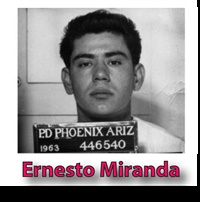The Legal Do’s and Don'ts of Closing Arguments
Total Credits: 1 including 1 General
- Average Rating:
- Not yet rated
- Credit Type:
- General | Practical Skills | Trial Practice
- Faculty:
- Steven L. Taylor
- Course Levels:
- Intermediate
- Duration:
- 1 Hour 03 Minutes
- License:
- Access for 60 day(s) after purchase.
Description
The fundamentals of a good closing argument are mostly strategic and rhetorical, being designed to convince a properly-skeptical jury to come to the right conclusion on the facts. But, naturally, the law plays an important role in determining what may argued – and how it may be argued. This presentation will emphasize the two “do’s” of a proper closing argument, and, at the same time, will discuss a number of the “don’ts”, which will allow prosecutors to avoid the most-common land mines that can lead to objection during closing argument, including the highly-improper “don’t” of commenting on the defendant’s silence during trial. Items of discussion will include:
A. Purposes of Closing Argument
B. Two “Do’s” – wide latitude in commenting on evidence and reasonable inferences arising therefrom
C. Many “Don’ts” – forbidden topics, avoiding emotionalism, unfair arguments, not supported by record
D. Going through the Opened Door -- “Don’t” Get Baited
E. Conclusion
Handouts
| Do's and Don'ts of Closing Arguments final - Compatibility Mode (397.4 KB) | Available after Purchase | ||
| May 2023 -- Griffin, Doyle, Leach & Prohibited Comments on Silence (101.9 KB) | Available after Purchase | ||
| July 2023 -- Closing Argument on Whether the Defendant has Lied (85.5 KB) | Available after Purchase | ||
Faculty
Steven L. Taylor Related Seminars and Products
Legal Research & Staff Counsel
Ohio Prosecuting Attorneys Association
In 1983, Steven L. Taylor received a B.A. degree in History from the University of Michigan. In 1986, he received a J.D. degree from the Ohio State University. He is a former law clerk for the Ohio Court of Appeals, Tenth Appellate District, and for Chief Justice Thomas J. Moyer of the Ohio Supreme Court.
Steve served for many years as an Assistant Prosecuting Attorney and then as Chief Counsel of the Appellate Division of the Franklin County Prosecutor’s Office. Since 2009, he has served as the editor of the monthly Ohio Prosecuting Attorneys Association Case Digest and is now the Legal Research and Staff Counsel for the Association.











